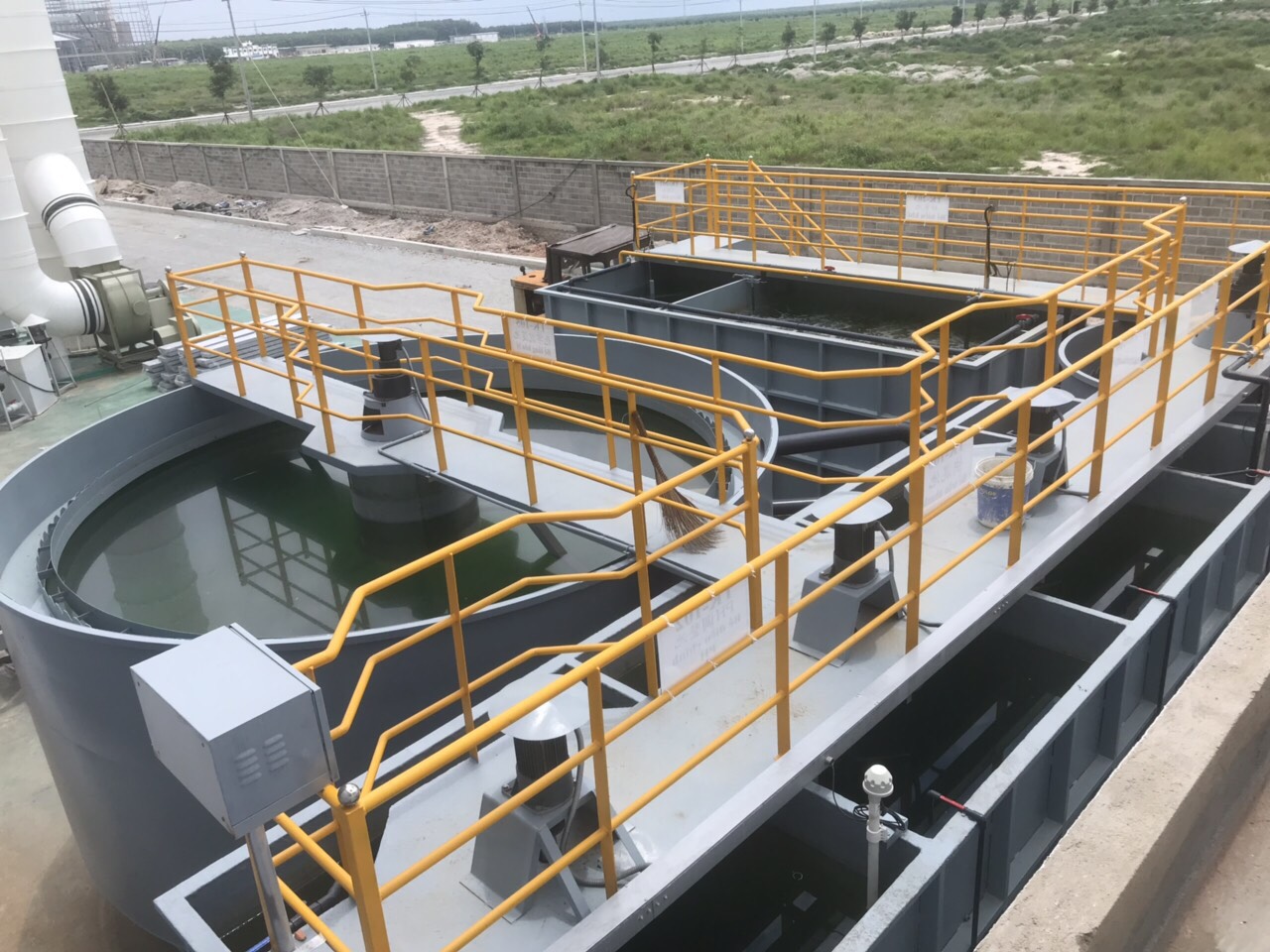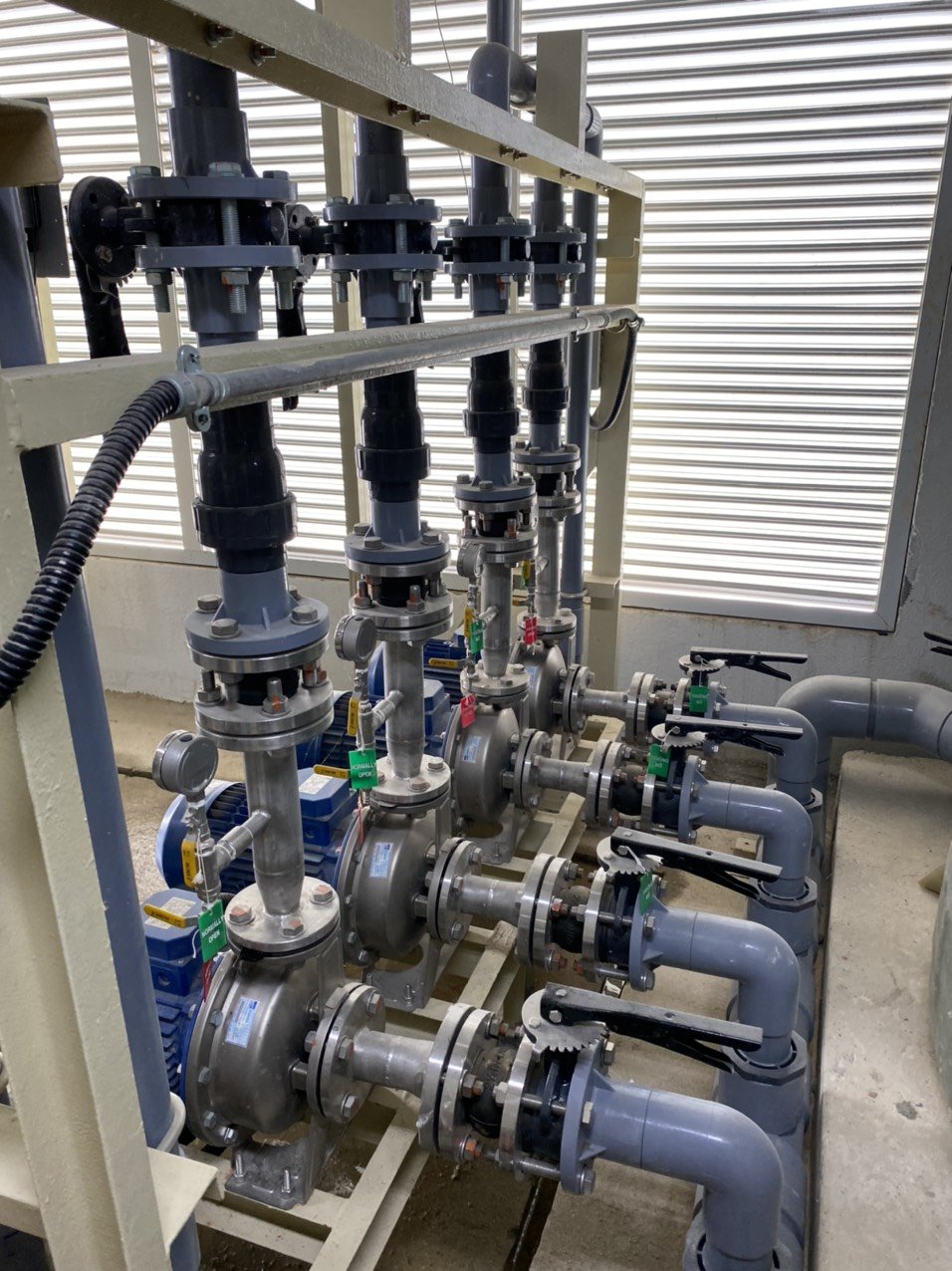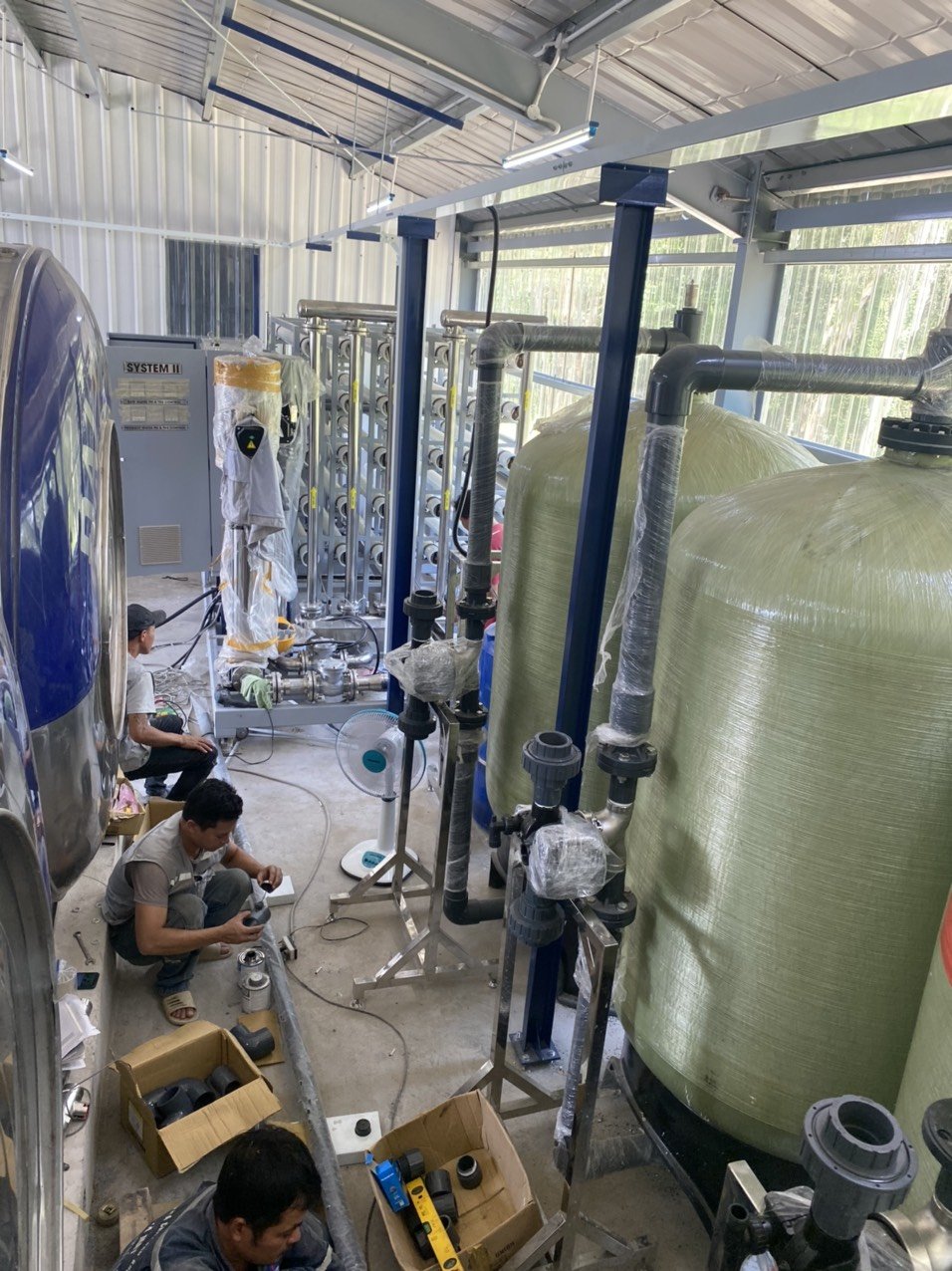The characteristics of wastewater treatment vary depending on the source. Types of wastewater include: domestic wastewater from households, urban wastewater and industrial wastewater
Domestic wastewater treatment system
Domestic wastewater treatment systems can be installed in households, offices, schools, hospitals or other public places...
Domestic wastewater treatment systems are classified into levels:
Small scale: like households, the system is designed to be simple but still ensure the quality of output water into the common wastewater system.
Medium scale: apartment buildings, companies, office areas, high-rise buildings have centralized wastewater treatment systems for many small discharge zones to ensure
Large-scale: Urban areas, residential areas, etc. with a system that is carefully built, complex and needs to be carefully surveyed before construction.
The characteristics of domestic wastewater vary by hour, by day, with the flow depending on the level of water use per capita according to habits, diets, living standards and lifestyles.
Chemically, consisting of organic (70%) and inorganic (30%) compounds as well as various gases. Organic compounds consist mainly of carbohydrates (25%), proteins (65%) and fats (10%), soaps, synthetic detergents, and their breakdown products. Inorganic ingredients may include: heavy metals, nitrogen, phosphorus, pH, sulfur, chloride, alkalis, toxic compounds, etc. Gases commonly dissolved in wastewater are hydrogen sulfide, methane, ammonia, oxygen, carbon dioxide and nitrogen. The solid waste content of raw domestic wastewater is very low, about 0.1% on average. This usually includes waste organic matter, some intangible solids, heavy metals, sand and rock debris and floating debris.

Industrial wastewater treatment system
Industrial wastewater treatment system is an indispensable part of industrial factory chain. Unlike domestic or municipal wastewater, industrial wastewater is a by-product of
Heavy metal components such as in metallurgy and plating industries
Organic ingredients, as in the industry: food industry
Complex organic chemicals such as pesticides, pharmaceuticals, paints, dyes, petrochemicals,...
Wastewater generated in the process of production, machine washing, etc. contains substances typical of that industry, which should be treated before entering the public drainage network to avoid causing environmental pollution.
The construction of wastewater treatment systems applies to many industries such as: livestock, health care, textile dyeing, hospitals, fisheries.... With each system, there will be different designs and operating procedures in accordance with the characteristics of waste.
Process of wastewater treatment system with high organic matter such as domestic and food
The primary goal of wastewater treatment is generally to allow human and industrial wastewater to be treated without endangering human health or damage to the natural environment. The design of wastewater treatment systems often features wastewater source. Processes should be selected and designed as technically and economically feasible. Conventional wastewater treatment includes a combination of physical, chemical and biological processes and activities to remove solids and organic matter from wastewater.
STOP ACCEPTING:
Garbage screen: usually made of metal, placed at the inlet of the channel will retain coarse impurities such as rags, garbage, plastic bags, and other wastes to be retained, to protect the treatment equipment such as pumps, pipes, ditches, etc.
Collection tank: is the place to receive wastewater before entering the next wastewater treatment works. Collection tanks are usually made of concrete, built of bricks.
AIR TANKS:
Used to maintain a nearly constant influent flow, it is important to adjust the pH to a value suitable for biological treatment. In the tank, there is a system of stirring equipment to ensure the dissolution and leveling of the concentration of dirt in the entire volume of the tank and to prevent sediment in the tank, to dilute the concentration of toxic substances if any. There is also a device for collecting and discharging foam and floating scum. At the conditioning tank, the wastewater is returned to a neutral state, ie the pH is about 6.5 - 8.5.
GAS BIOLOGICAL TREATMENT
Here, the decomposition of organic and inorganic substances in wastewater takes place in the absence of oxygen. Wastewater is fed directly to the bottom of the tank and is distributed evenly there, then flows back up through the granular biological sludge and the organic and inorganic substances are consumed here.
The process of converting pollutants in wastewater by anaerobic microorganisms occurs in three steps:
Stage 1: a group of natural microorganisms present in the wastewater hydrolyze complex organic compounds and lipids into light-weight simple organic substances such as monosaccharides, amino acids to create a food source and energy for microbial activity.
Stage 2: acid-producing bacteria group converts simple organic compounds into organic acids, usually acetic acid, butyric acid, Propionic acid. At this stage the pH of the solution drops.
Stage 3: methanogens convert hydrogen and acetic acid into methane and carbon dioxide, the pH of the medium increases.
AVOID BIOGRAPHY
The aerobic biological method uses a group of aerobic microorganisms, operating under conditions of continuous oxygen supply. The process of breaking down organic matter by microorganisms is called biochemical oxidation. Aerobic microorganisms will decompose organic substances in wastewater and collect energy to convert into new cells, only a part of organic matter is completely oxidized to CO2, H2O, NO3-, SO42- ... Microorganisms existing in the activated sludge of biological tanks include Pseudomonas, Zoogloea, Achromobacter, Flacobacterium, Nocardia, Bdellovibrio, Mycobacterium, and two nitrifying bacteria Nitrosomonas and Nitrobacter. In addition, many filamentous bacteria such as Sphaerotilus, Beggiatoa, Thiothrix, Lecicothrix, and Geotrichum also exist.
To carry out the biochemical oxidation of dissolved organic substances, colloids and small dispersants in wastewater, it is necessary to move inside the microbial cell in three main stages as follows:
Transfer of pollutants from the liquid phase to the microbial cell surface;
Diffusion from the cell surface across a semi-permeable membrane due to the concentration difference inside and outside the cell;
Metabolize substances in microbial cells, produce energy and synthesize new cells.
The rate of biochemical oxidation depends on the concentration of organic substances, the content of impurities, the density of microorganisms and the degree of stability of the wastewater flow at the treatment plant. At each given treatment condition, the main factors affecting the rate of biochemical oxidation reactions are hydrodynamic mode, oxygen content in wastewater, temperature, pH, nutrients and trace elements. … The organic matter load of a traditional aerobic bioreactor usually ranges from 0.32-0.64 kg BOD/m3. day and night. The dissolved oxygen concentration in the wastewater in the aerobic bioreactor should be maintained at a value greater than 2.5 mg/l at all times.
CLARIFIER
Wastewater after passing through the aerobic biological treatment tank is distributed into the water distribution area of the settling tank. Clean water is collected evenly on the surface of the settling tank through the overflow chute, the microbial sludge is settled and collected to the aerobic tank, a part of the sludge is circulated to the sludge tank.
WEIGHT SYSTEM
The treatment process in artificial conditions does not completely eliminate bacteria, especially pathogenic and infectious bacteria. Therefore, after the biological treatment stage in artificial conditions, it is necessary to disinfect wastewater before discharging into the environment. When chlorine is added to water, chlorine is a strong oxidizing agent that will diffuse through the cell membrane of microorganisms and react with the enzymes inside the microbial cells, disrupting the metabolism leading to microorganisms. destroyed object.
WASTE SHOCKET
The sludge in the settling tank will be transferred to the collection tank and periodically removed by specialized vehicles for industrial wastewater treatment.















